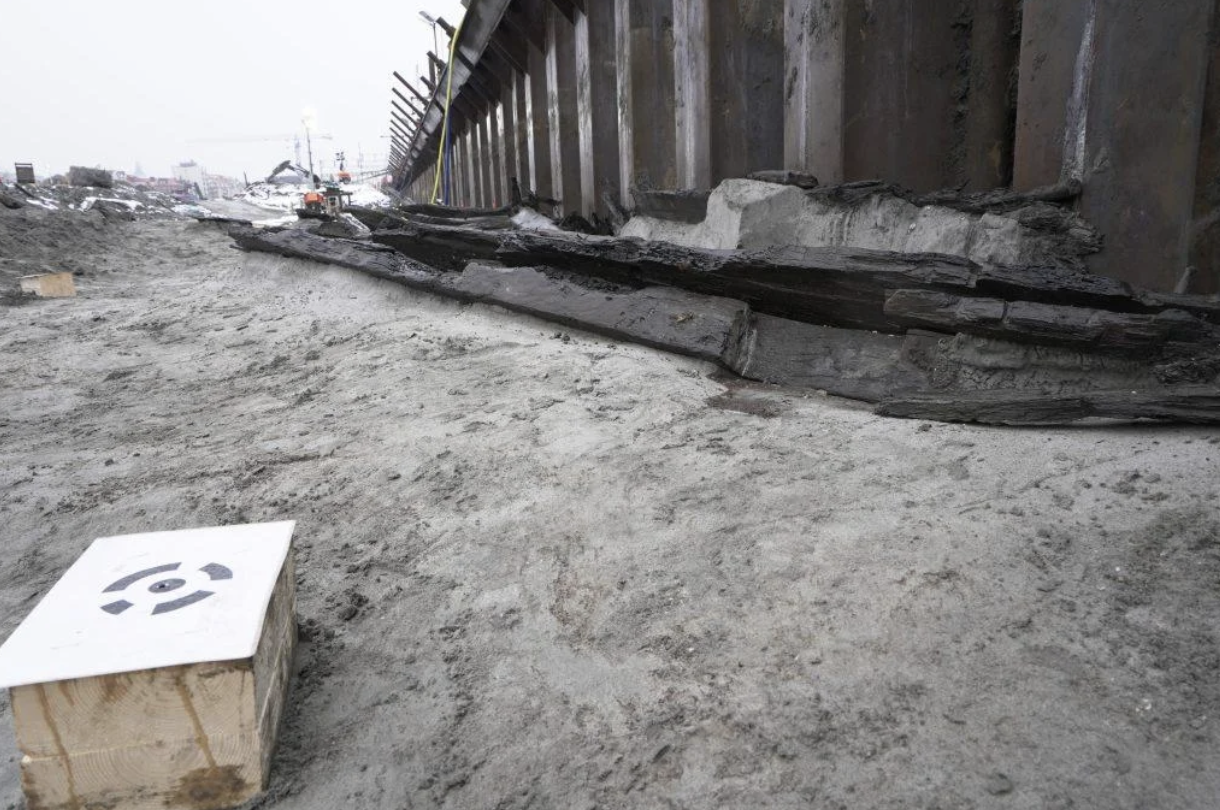Centuries-Old Shipwrecks Uncovered in Swedish Coastal Town!
During an archaeological dig in Varberg, a coastal town in southwest Sweden, six remarkably well-preserved shipwrecks have been unearthed, offering a rare glimpse into maritime life from the Middle Ages through to the 17th century. The excavation took place as part of preparatory work for the construction of the Varberg Tunnel and has since become one of Sweden’s most significant maritime archaeological finds in recent years.
These shipwrecks, discovered near what was once the original shoreline, reflect centuries of seafaring history and evolving shipbuilding techniques. The investigations began back in 2019 and were led by Arkeologerna in collaboration with the Bohuslän Museum, Visual Archaeology, and Cultural Environment Halland.
One of the standout discoveries is Varberg Wreck 2, a sailing vessel built from oak in the 1530s using the traditional clinker method. This technique, which involves overlapping wooden planks, was widely used across northern Europe and gives vessels a distinctive ribbed appearance. Remarkably intact, the wreck still includes two sections of the starboard hull and a berghult, a protective strip along the hull, commonly used during docking. While typically associated with carvel-built ships, finding a berghult on a clinker-built vessel adds an intriguing twist. Even more curious are the signs of burning on this part of the ship, leaving archaeologists to wonder if it was damaged or deliberately set alight before it went under.
Another vessel, Wreck 5, also clinker-built, dates to the 17th century. Although less well-preserved, likely due to time pressures during construction, it still provides valuable insight into the period. Built from locally sourced oak, it probably sailed between the medieval town of Varberg and the now-abandoned Ny Varberg, which was deserted in the early 1600s.
In contrast, Varberg Wreck 6 stands out as the only carvel-built ship among the group. This style, where planks are laid edge-to-edge to form a smooth hull, was influenced by Dutch shipbuilding methods. Interestingly, the wreck featured a preserved rabbeted keel, the only one found during the excavations. However, despite dendrochronological testing, researchers have yet to pinpoint the exact age or origin of the timber.
Also among the finds were Wrecks 3 and 4, believed to be 14th-century cogs. These flat-bottomed cargo ships were a staple of medieval European trade. Although analysis is still ongoing, experts are hopeful these wrecks will reveal more about the commercial networks and seafaring lifestyles of the Middle Ages.
What makes this discovery particularly fascinating is the wider context. Johan Schager from Arkeologerna noted that preserved shipwrecks are increasingly being found along Sweden’s west coast, often due to large-scale infrastructure projects in areas that, centuries ago, would have been underwater or part of busy harbour zones.
As archaeologists continue to study these wrecks, especially the two cogs, the site is shaping up to be a treasure trove of maritime history, offering unique insights into ship design, trade routes, and coastal life from a bygone era.


